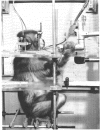Abstract
It is necessary but not sufficient to develop laboratory animal models in sensory behavioral toxicology for screening toxic substances and for the analysis of sensory impairment at threshold levels of stimulation. It is important to develop more thorough and quantitative tests of impairment which in their greater complexity more accurately reflect the conditions and environmental demands of day-to-day life. Such greater complexity in stimulus conditions and behavior may also aid in monitoring not merely the state of the receptor organ but more central nervous processes which are the focus of assault by many known toxic substances. Techniques are described for studying such acoustic behaviors as intensity discrimination and frequency selectivity in guinea pig and monkey by use of operant conditioning procedures coupled with sensory testing (psychophysical) methods. Impaired auditory selectively and discrimination is shown to be correlated with histopathological changes in the inner ear. Slight modification of these procedures in animals may be used to investigate acoustically more intricate behaviors such as sound localization and the perception of frequency modulated acoustic signals as elements of speech and communication sounds.
Full text
PDF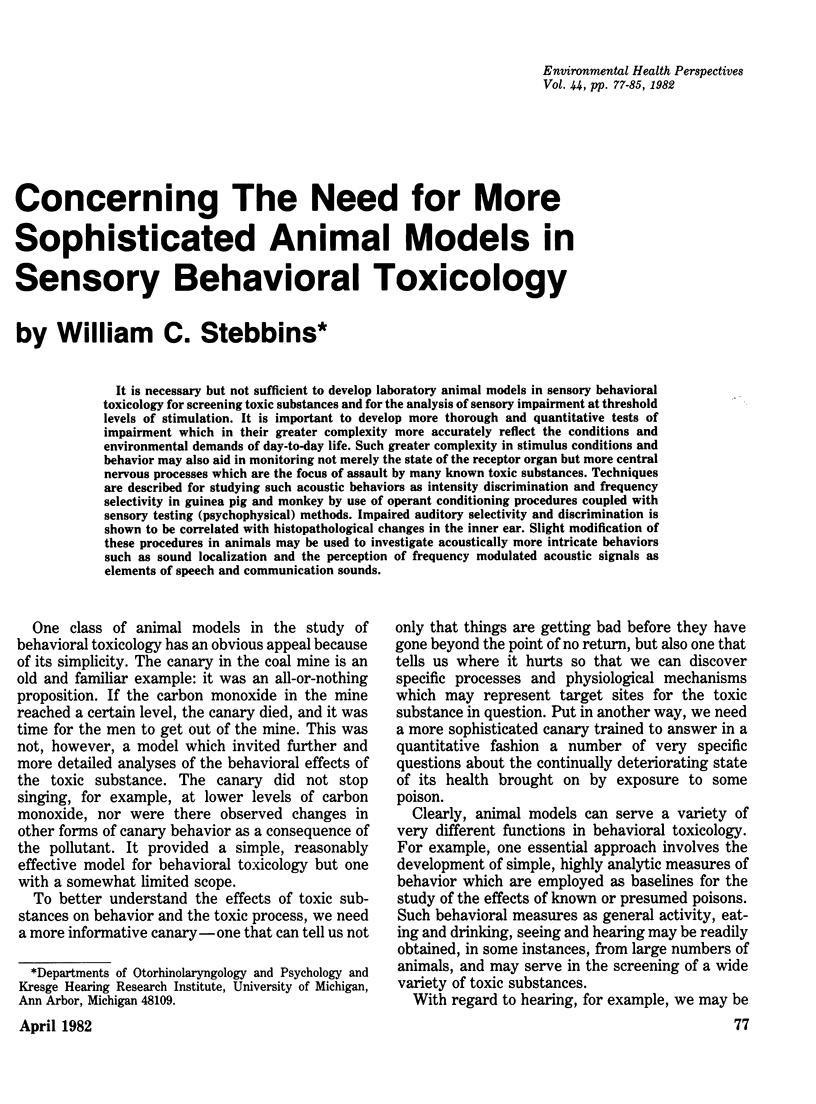
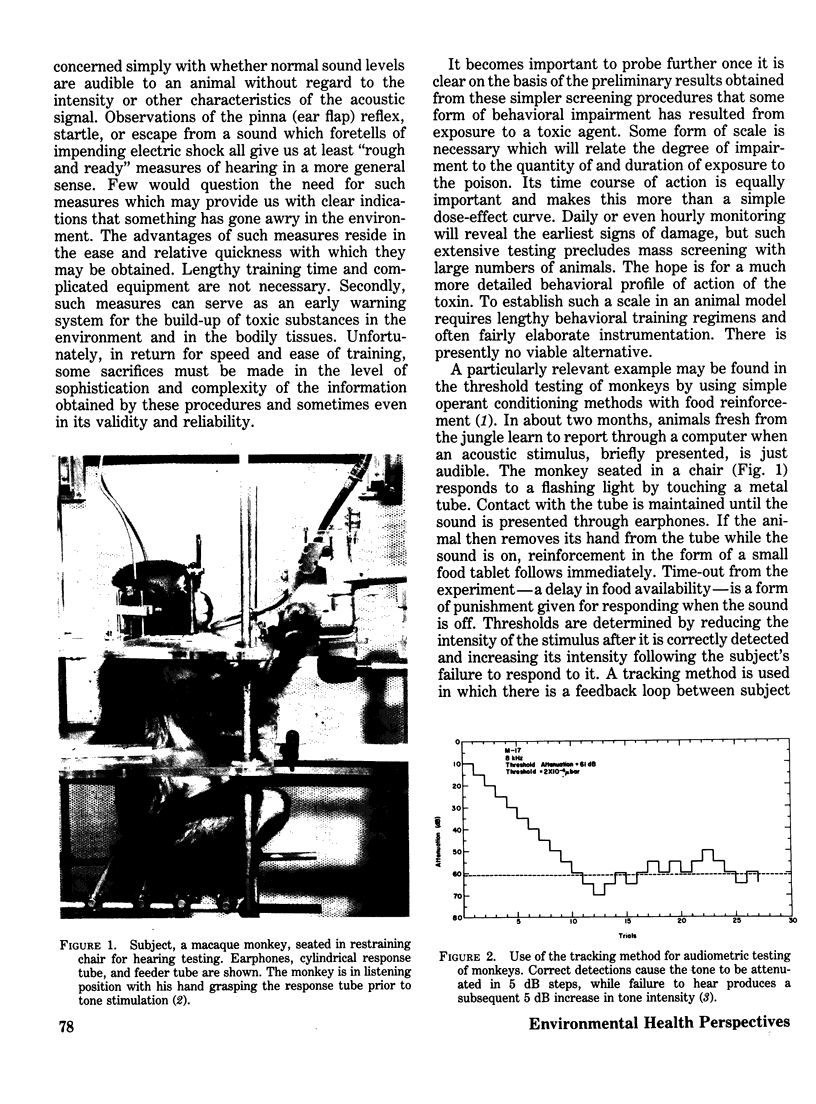
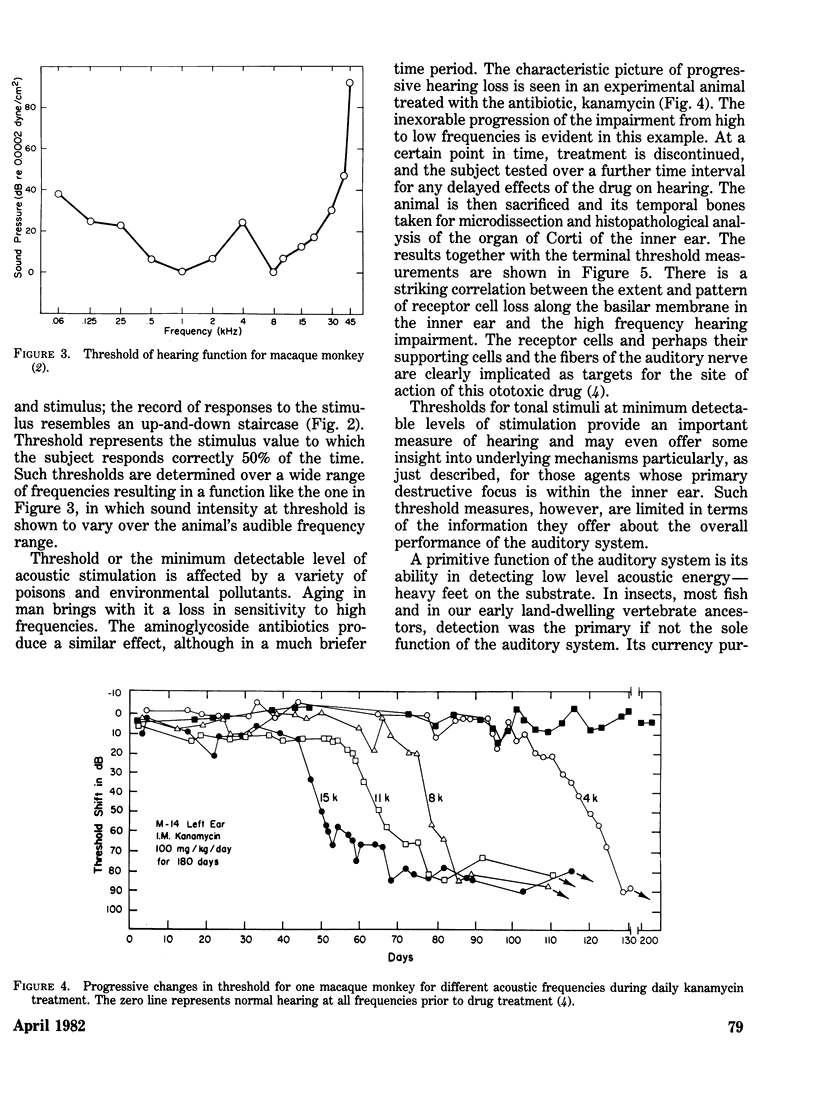
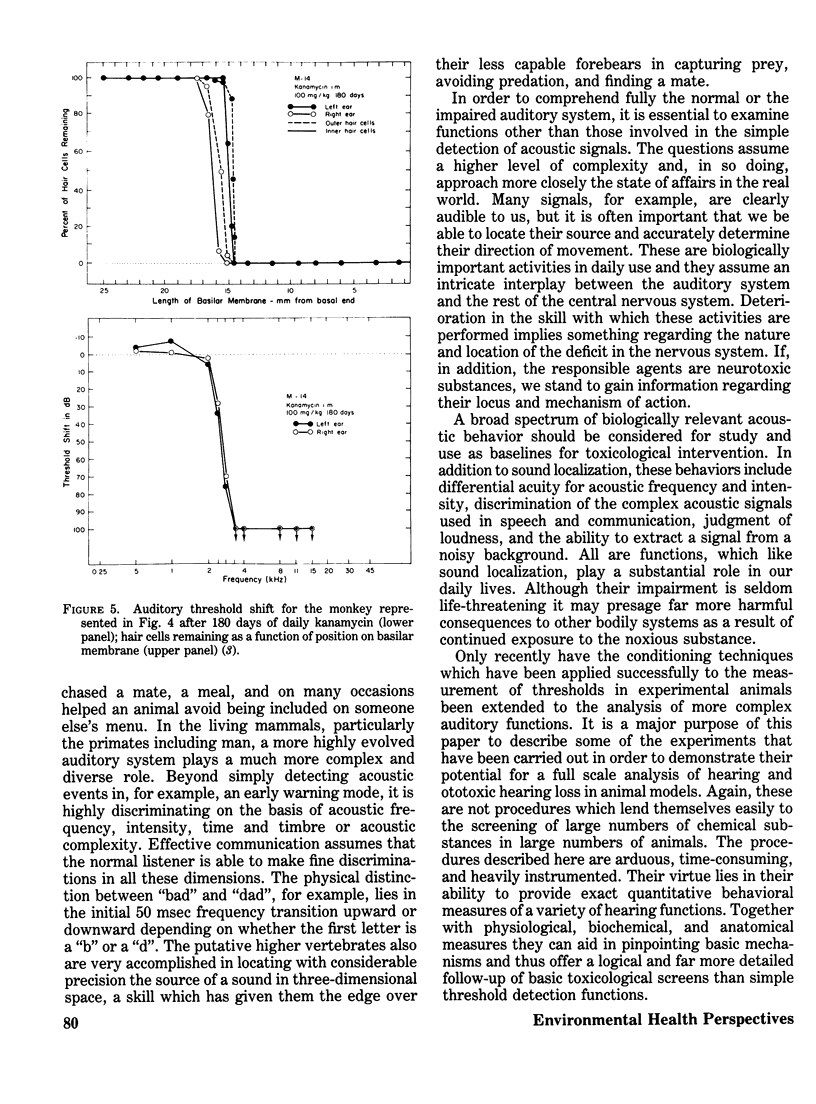

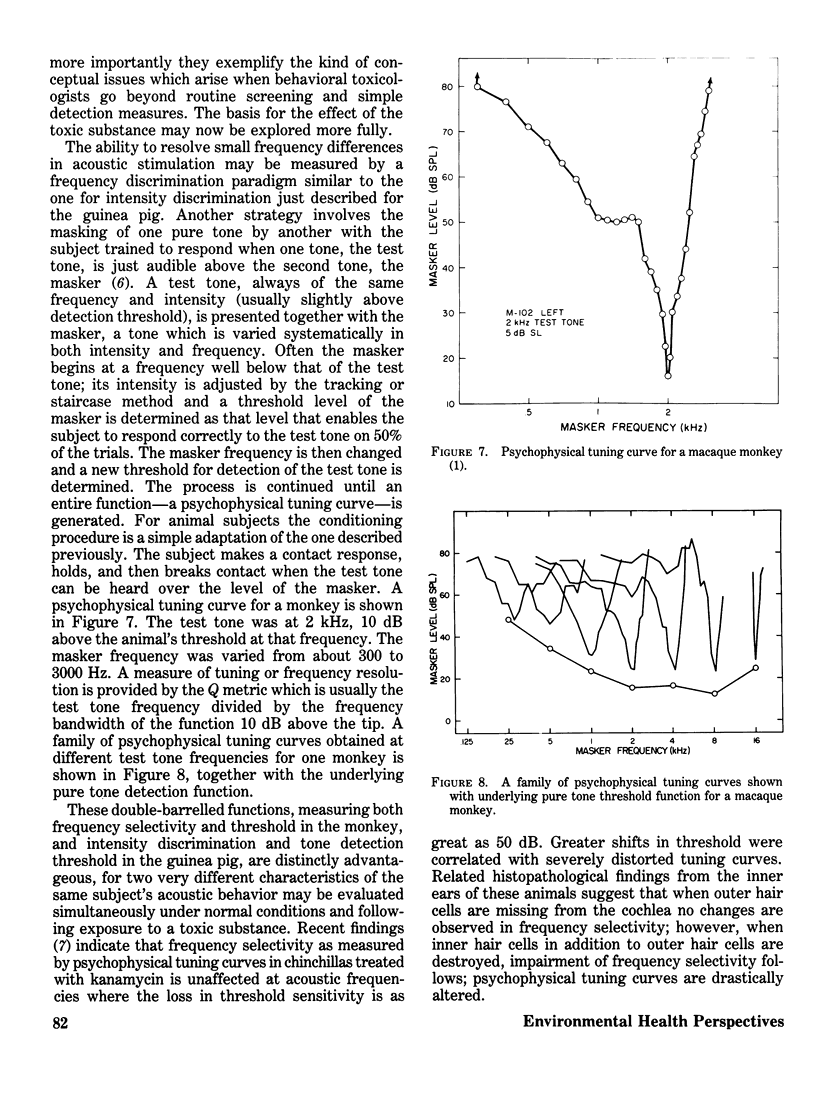
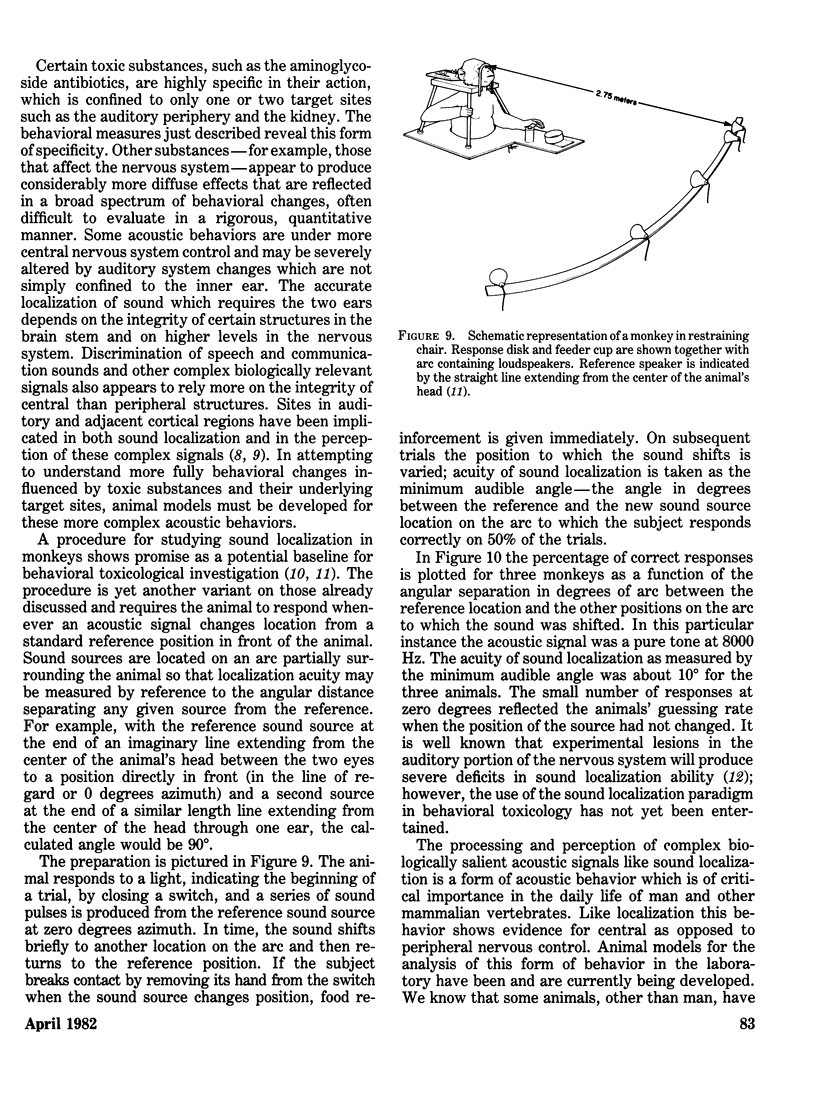
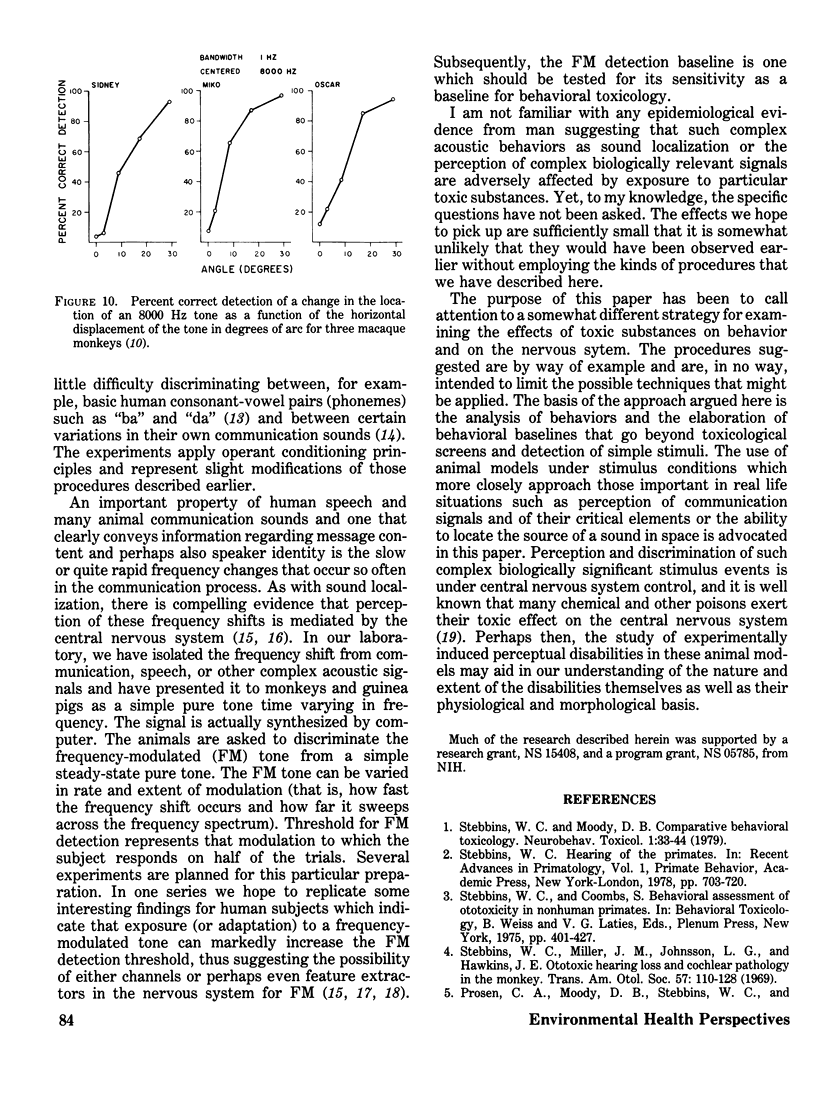
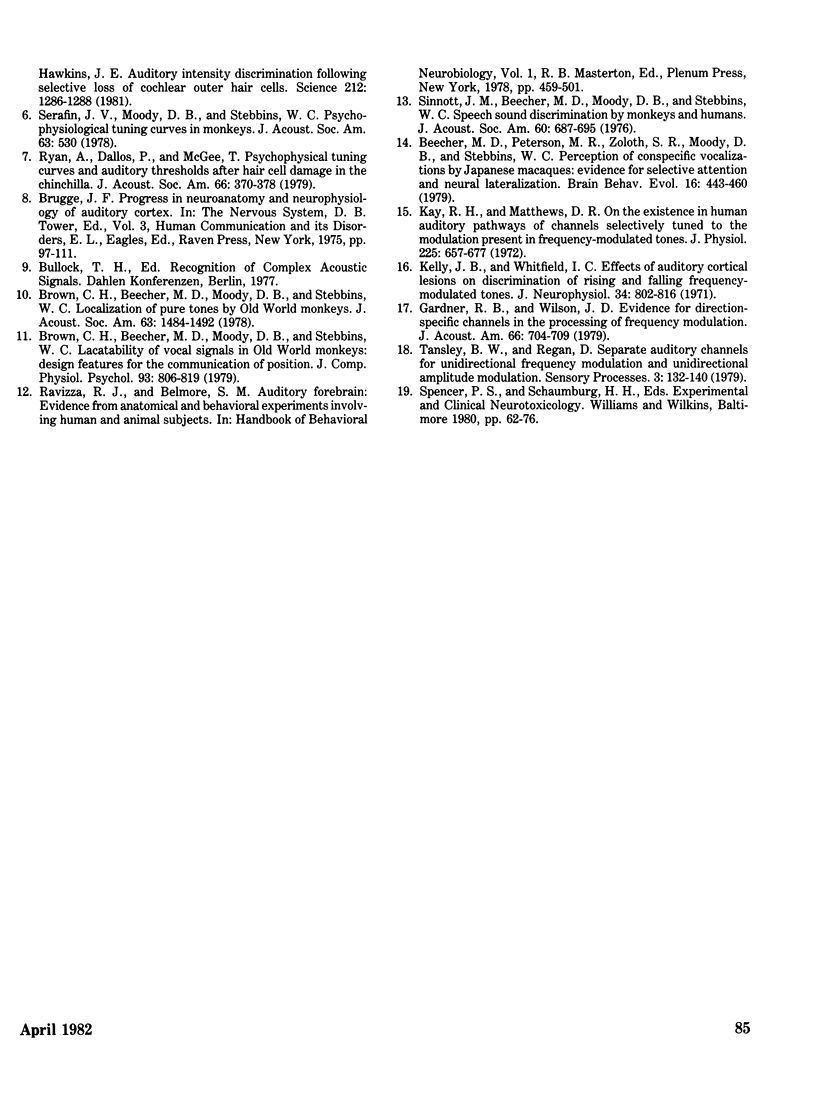
Images in this article
Selected References
These references are in PubMed. This may not be the complete list of references from this article.
- Beecher M. D., Petersen M. R., Zoloth S. R., Moody D. B., Stebbins W. C. Perception of conspecific vocalizations by Japanese macaques. Evidence for selective attention and neural lateralization. Brain Behav Evol. 1979;16(5-6):443–460. doi: 10.1159/000121881. [DOI] [PubMed] [Google Scholar]
- Gardner R. B., Wilson J. P. Evidence for direction-specific channels in the processing of frequency modulation. J Acoust Soc Am. 1979 Sep;66(3):704–709. doi: 10.1121/1.383220. [DOI] [PubMed] [Google Scholar]
- Kay R. H., Matthews D. R. On the existence in human auditory pathways of channels selectively tuned to the modulation present in frequency-modulated tones. J Physiol. 1972 Sep;225(3):657–677. doi: 10.1113/jphysiol.1972.sp009962. [DOI] [PMC free article] [PubMed] [Google Scholar]
- Kelly J. B., Whitfield I. C. Effects of auditory cortical lesions on discriminations of rising and falling frequency-modulated tones. J Neurophysiol. 1971 Sep;34(5):802–816. doi: 10.1152/jn.1971.34.5.802. [DOI] [PubMed] [Google Scholar]
- Prosen C. A., Moody D. B., Stebbins W. C., Hawkins J. E., Jr Auditory intensity discrimination after selective loss of cochlear outer hair cells. Science. 1981 Jun 12;212(4500):1286–1288. doi: 10.1126/science.7233219. [DOI] [PubMed] [Google Scholar]
- Ryan A., Dallos P., McGee T. Psychophysical tuning curves and auditory thresholds after hair cell damage in the chinchilla. J Acoust Soc Am. 1979 Aug;66(2):370–378. doi: 10.1121/1.383194. [DOI] [PubMed] [Google Scholar]
- Sinnott J. M., Beecher M. D., Moody D. B., Stebbins W. C. Speech sound discrimination by monkeys and humans. J Acoust Soc Am. 1976 Sep;60(3):687–695. doi: 10.1121/1.381140. [DOI] [PubMed] [Google Scholar]
- Stebbins W. C., Moody D. B. Comparative behavioral toxicology. Neurobehav Toxicol. 1979;1 (Suppl 1):33–44. [PubMed] [Google Scholar]
- Tansley B. W., Regan D. Separate auditory channels for unidirectional frequency modulation and unidirectional amplitude modulation. Sens Processes. 1979 Jun;3(2):132–140. [PubMed] [Google Scholar]



